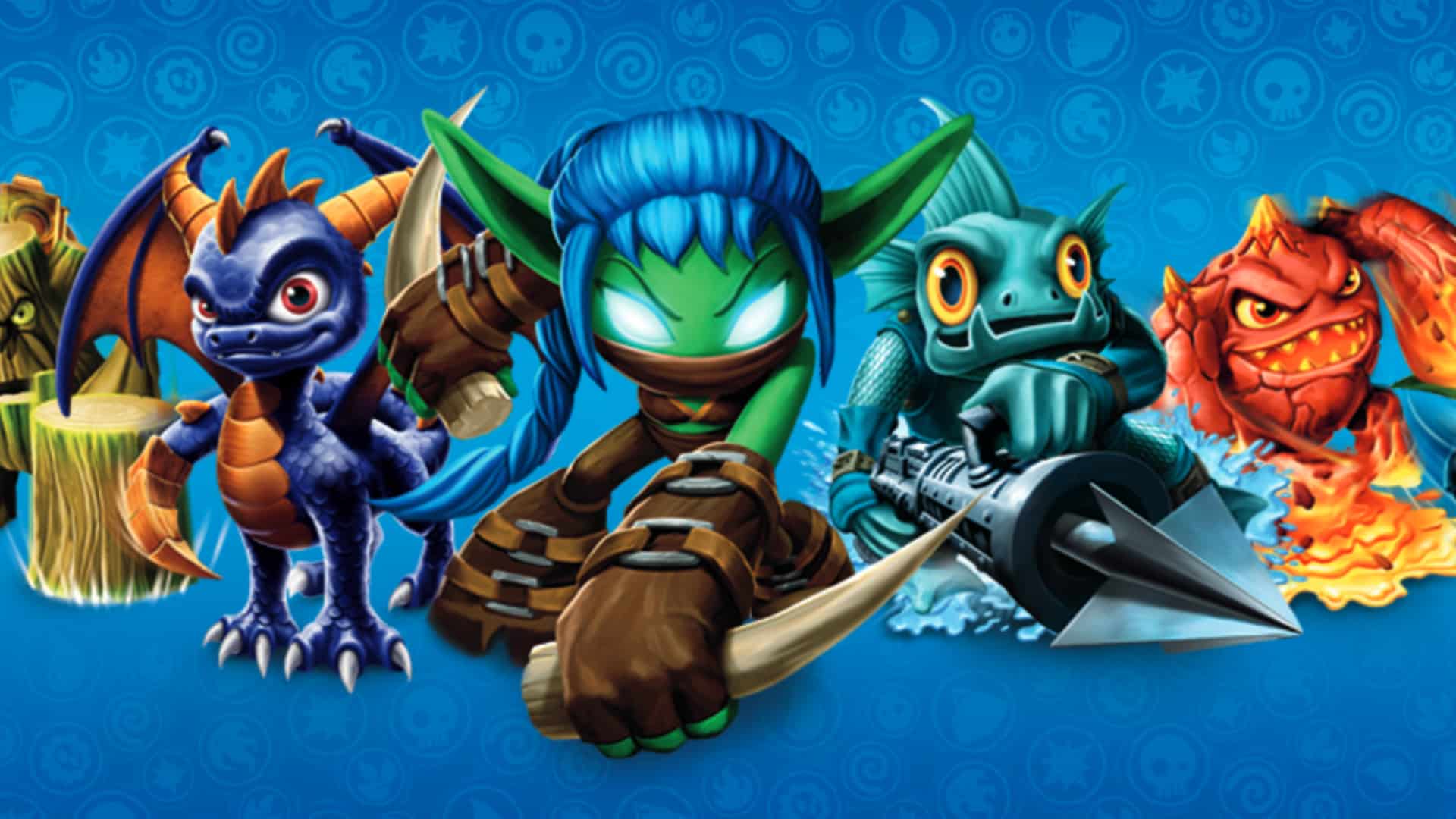Skylanders is an incredibly important series of games, having popularized the toys-to-life genre. During the course of its lifespan, the games allowed players to purchase toys at a store, and use NFC technology to bring them to life in-game. Published by Activision, the games were developed by both Toys For Bob and Vicarious Visions, with both studios taking it in turns over the years.
While the series may very much be a product of its time, it deserves a lot of credit for trying something new, and pushing the boundaries of innovation so that similar titles could benefit in the years to come.
Skylanders: Spyro’s Adventure (2011)
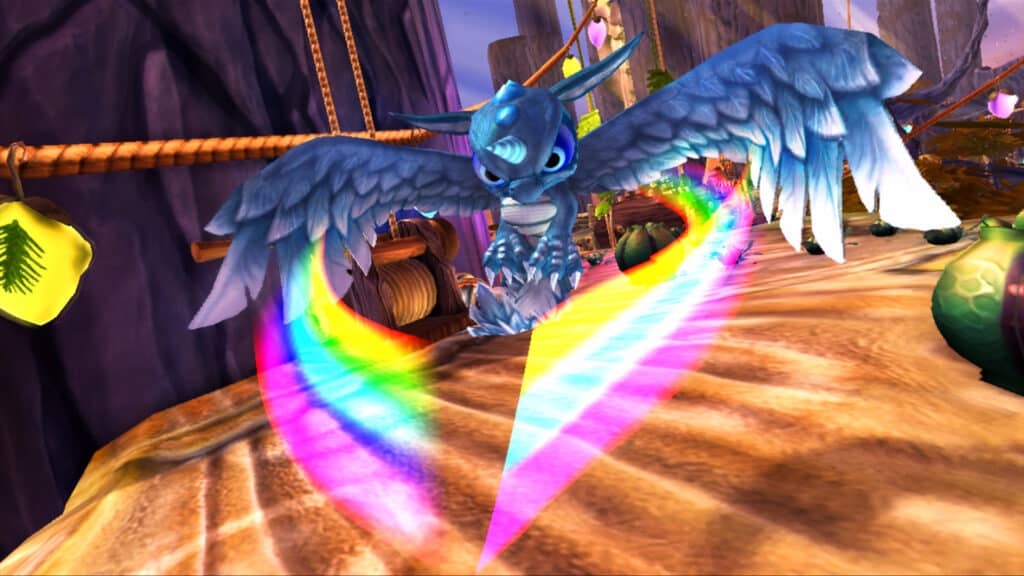
Skylanders: Spyro’s Adventure kicked off the franchise, introducing the Portal of Power, a tool used to bring real toys into the game using NFC technology. This meant that you could buy Skylanders action figures at the store, and have them appear in your game later that day! Since this innovation was first conceived, it has become a huge selling point for the series, appearing in all future mainline releases.
When the series came to fruition, Activision decided it needed a mascot to get gamers on board with the idea. That’s why Spyro was included. The character had been somewhat dormant, but was still a huge name that players recognized. As a result, he’s the titular character of the first Skylanders game, even if he doesn’t play a huge role in the story.
The game itself is pretty standard third-person platformer fare. After you’ve placed your figure onto the Portal of Power, you’re transported into the world where you move through a variety of themed levels. In each area, you have to solve puzzles, defeat enemies, and collect items along the way. Each Skylander has its own set of attacks and abilities, so you’ve got to collect a few to fully embrace your potential! There’s a lot more value in buying these toys than purchasing a character via a microtransaction. Once you’re done with the game, you still have a cool toy to put on display. As well as this, the toys actually save your XP and upgrades, so if you want to move to a different platform, you can do so with all your progress intact.
While Skylanders: Spyro’s Adventure may have been a little rough around the edges in parts, it was a great platform to build upon.
Skylanders: Universe (2011)
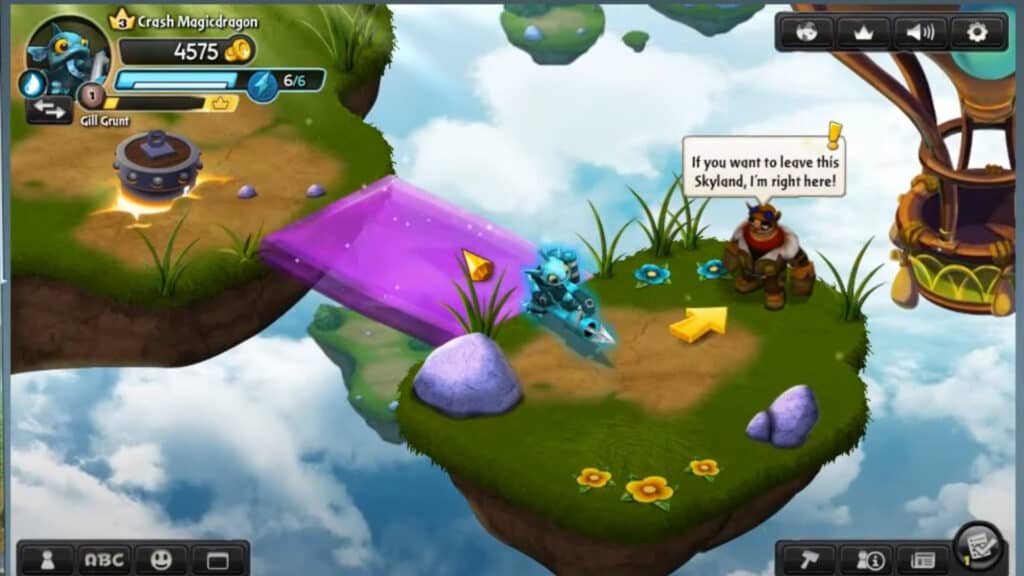
©Screenshot from Skylanders: Universe.
It was clear that Activision intended for Skylanders to be a huge franchise, and began pumping out complimentary titles alongside the main games. Skylanders: Universe was one such release. The game was a free-to-play online title designed to bring a multiplayer experience to the franchise.
If you bought the Skylanders toys for the main game, you could enter a code from the item, to get the respective character in this game. Alternatively, it offered the ability for you to create your own character, and explore a world with different environments similar to Skylanders: Spyro’s Adventure.
The main focus here was on the several quests the game offered, which you could complete to earn XP. These usually focused on exploration, puzzle-solving, and combat, resembling the main release in a scaled-down way. As well as this, it also allowed you to compete in various mini-games, which provided some needed diversity to the experience.
All of this could be completed with friends, as social interaction was a huge focus. You could even visit your friend’s own worlds instead of your own. Unfortunately, the game was eventually shut down back in 2013, so there’s no way to play Skylanders: Universe anymore.
Skylanders: Cloud Patrol (2012)
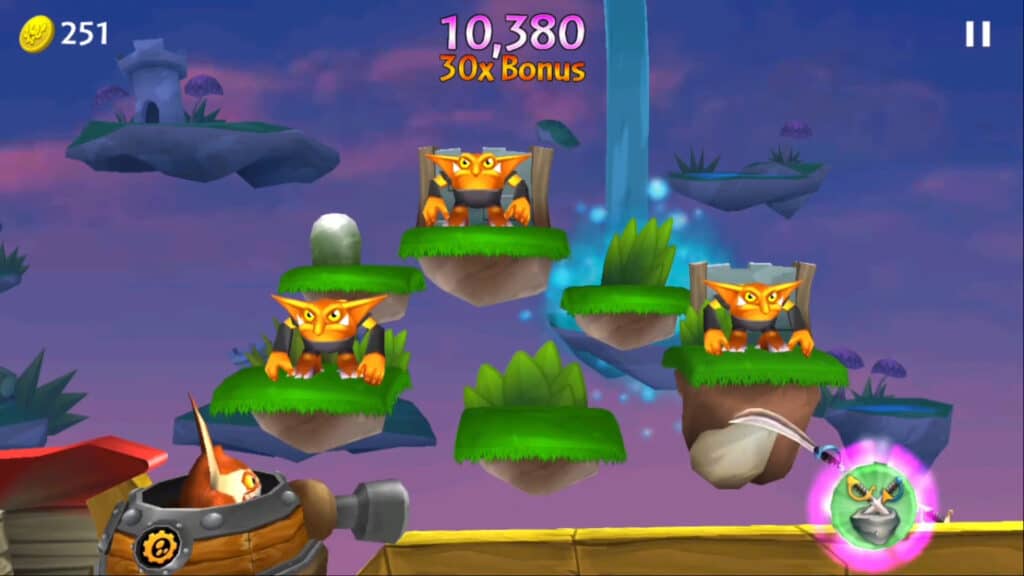
©Screenshot from Skylanders: Cloud Patrol.
During the early days of the series, Skylanders: Cloud Patrol was another of the releases intended to complement the main games. This particular title was a mobile game, offering an arcade shooter experience perfect for short-term play.
In the game, you play as a Skylands Portal Master, and must clear the skies from different enemies. You earn points by shooting enemies, and lose them for shooting friendlies. Some enemies require several taps to defeat, while others have special abilities that can make it harder to finish them for good. As the levels progress, power-ups and bonuses appear, which offer you temporary advantages to complete the levels. You decide when you use them, so strategically choosing your moment can be key to victory.
Skylanders: Cloud Patrol features a variety of characters to choose from the roster of Spyro’s Adventure, and each have their own abilities to use. You’re able to switch on the fly, decided based on the challenges of each level.
Sadly, Skylanders: Cloud Patrol was removed from app stores in 2016, rendering it unplayable.
Skylanders: Lost Islands (2012)
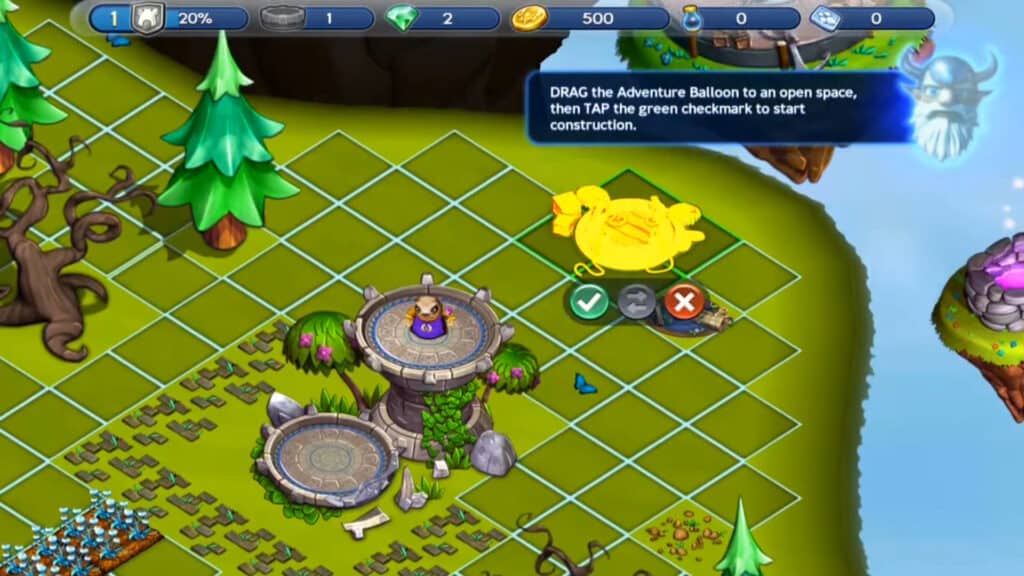
©Screenshot from Skylanders: Lost Islands.
When the series got up and running, Activision really was determined to cover all bases in terms of genre. This time around, Skylanders: Lost Islands is a city-builder released for mobile devices. Here, you build and manage your own floating island. Over time, you get to expand your island and add new structures, with a variety of Skylanders-themed items to choose from. The game even allows you to visit your friend’s islands, with unique bonuses for doing so.
As is standard in this type of game, resource gathering is core to the experience. You collect gold and elemental shards, which can then be spent on building and upgrading structures. Each building has its own purpose. Some provide housing, while others help to gather even more resources.
During gameplay, you can invite various Skylanders to your island. These characters provide their own bonuses, such as increased resource generation. You can also send these Skylanders out on quests or adventures, which earn XP, resources, and unique rewards.
While Skylanders: Lost Islands was released as a free-to-play experience, it offers several in-app purchases that can make the more tedious parts of gameplay much faster. You can buy resources, items, and even characters to speed things up, even if it’s not required. The game was ultimately removed from app stores in late 2017, meaning these purchases were eventually worthless.
Skylanders: Battlegrounds (2012)
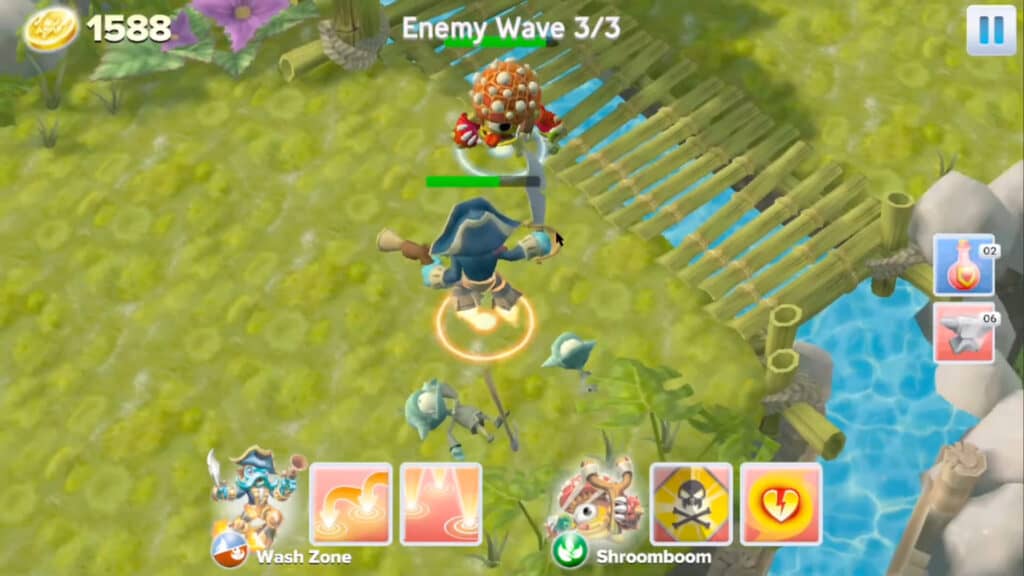
©Screenshot from Skylanders: Battlegrounds.
Skylanders: Battlegrounds was a top-down action RPG designed for mobile devices. The game offers turn-based combat, with real-time movement, a big departure from the main titles. Released alongside Skylanders: Giants, the game was designed to complement the new release.
In this title, you have to manage a party of two Skylanders in battle. These characters, like in the main games, have their own unique abilities and attacks, and there’s an element of party management to ensure they’re as efficient as possible.
The main gameplay element here is quests, which can be completed for XP and story progression. These quests involve combat and puzzle-solving, which is prevalent across the Skylanders spinoffs. It’s interesting that while each title might embrace a new genre, the core concept of puzzle-solving and questing remains exactly the same across the board.
Skylanders: Battlegrounds was removed from app stores in 2016. It’s unclear why all of these spinoffs were eventually shut down, although it’s unfortunate that such a large chunk of the series is now unplayable.
Skylanders: Giants (2012)
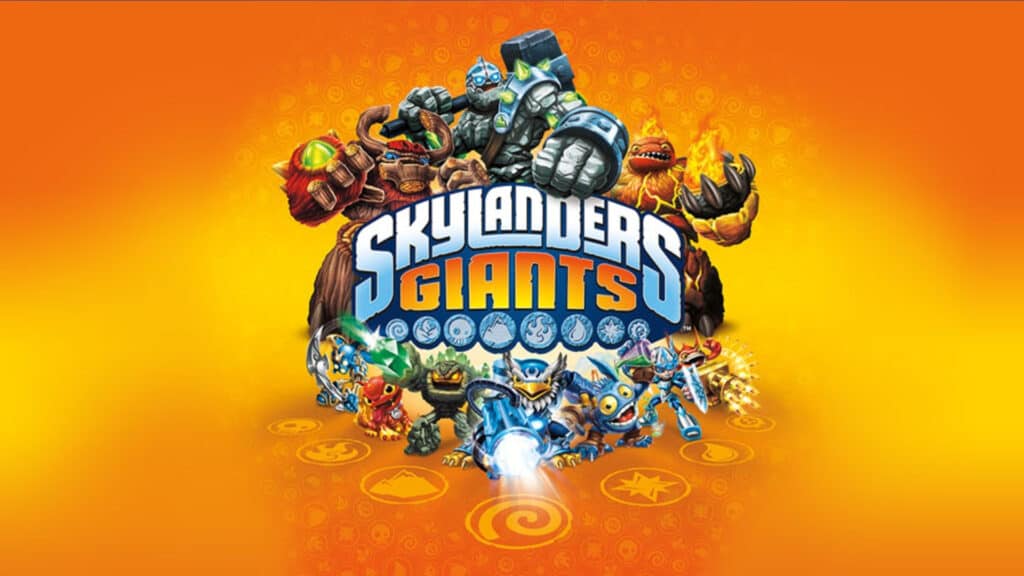
Skylanders: Giants is the second mainline game in the franchise. Released around the same time as many of the spinoffs, the game had lofty expectations to improve upon the original. The game continues the general theme of the previous title, with all characters coming from the purchase of real-life figures.
As it was released just a year after Skylanders: Spyro’s Adventure, Giants had to justify its existence somehow. It did so by adding ‘Giant Skylanders’ to the game, which have the ability to interact with the environment in ways the original Skylanders couldn’t. This includes lifting heavier objects and smashing through obstacles to access special areas. As well as Giants, the game also introduced LightCore Skylanders. These light up on the Portal of Power, and can actually light up areas in the game world revealing secret pathways for you to take. Overall, these additions were a great way to make players think differently about how they interact with the game environment.
If you played the original game and kept your action figures, you were in luck. Skylanders Giants allowed players to use their characters from the previous game, with progress carrying over including upgrades and abilities. Unlike some yearly releases, it never felt like you were wasting your time when the inevitable sequel was released later down the line.
Skylanders: Swap Force (2013)
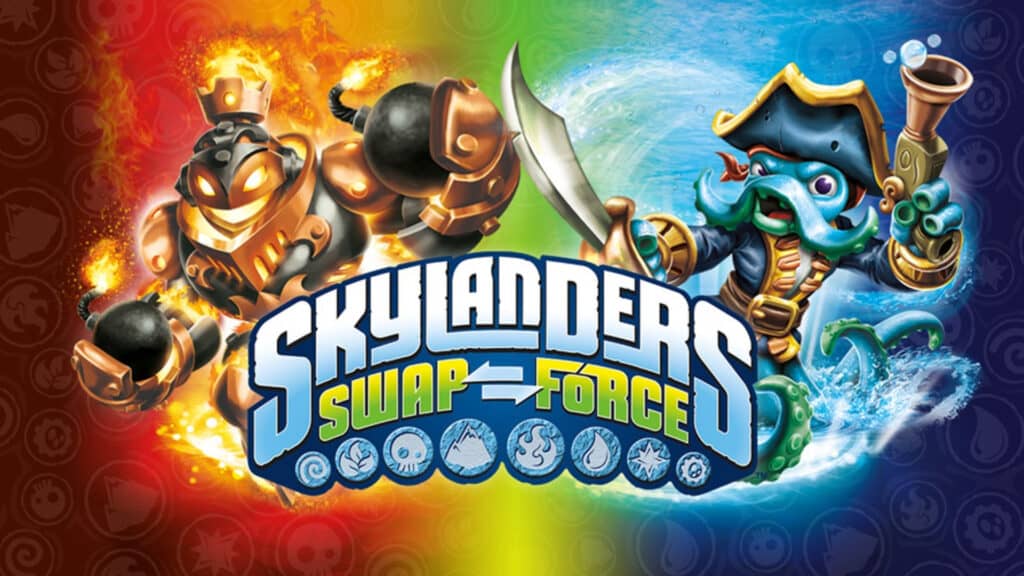
Like Skylanders: Giants before it, Swap Force was another yearly release in the series. Like its predecessors, all of your progress carried over from the previous titles, provided you had the figures on hand to place on the Portal of Power.
The biggest upgrade here was the introduction of Swap Force characters. You’re able to change their upper and lower body parts, which gives them a new set of powers to use. With 16 Swap Force Skylanders to choose from, this results in 256 possible combinations. Everything was thought of in advance by developer Vicarious Visions. It was the first time customization arrived in the series, and it was a huge hit.
These Swap Force characters also resulted in new mobility options. For example, some new characters can climb walls, while others can fly. This meant that the developer could incorporate new elements of verticality into the level design, which wasn’t really seen prior to Skylanders: Swap Force.
Finally, the game introduced elemental zones in levels, which you could only explore if you had a character of the matching elemental affinity. This meant that you had to think about your combinations if you wanted to explore all the content the game had to offer. All said and done, Skylanders: Swap Force was one of the bigger jumps in terms of gameplay for the series.
Skylanders: Trap Team (2014)
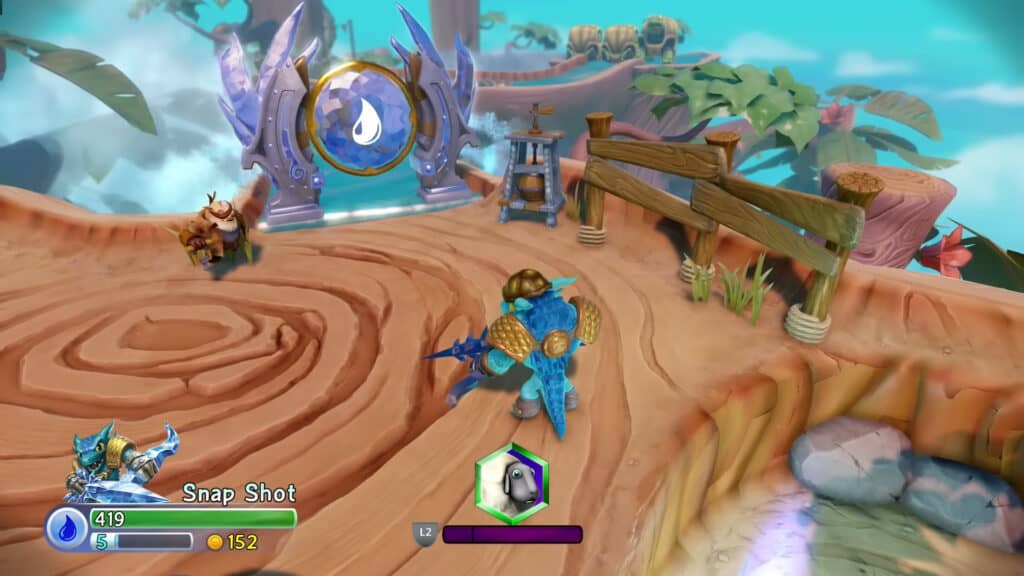
©Screenshot from Skylanders: Trap Team.
Skylanders: Trap Team was a very similar experience to its predecessor, continuing the mix-and-match mechanics established in the previous release. It did however have one huge improvement: trappable villains.
Like the Portal of Power before it, players had to purchase a new peripheral called the Traptanium Portal. Then, they would purchase physical traps to place in the new portal. By doing this, players could defeat powerful villains in-game, and capture them to be summoned and played as during gameplay. Like the Skylanders, each villain has their own set of unique abilities, making it worthwhile to try and trap them.
Beyond this, Skylanders: Trap Team is one of the smaller upgrades for the series. Each release, it’s clear that the developer was focused on adding at least one huge feature to justify the yearly cycle, but this was perhaps the first sign of diminishing returns.
Skylanders: SuperChargers (2015)
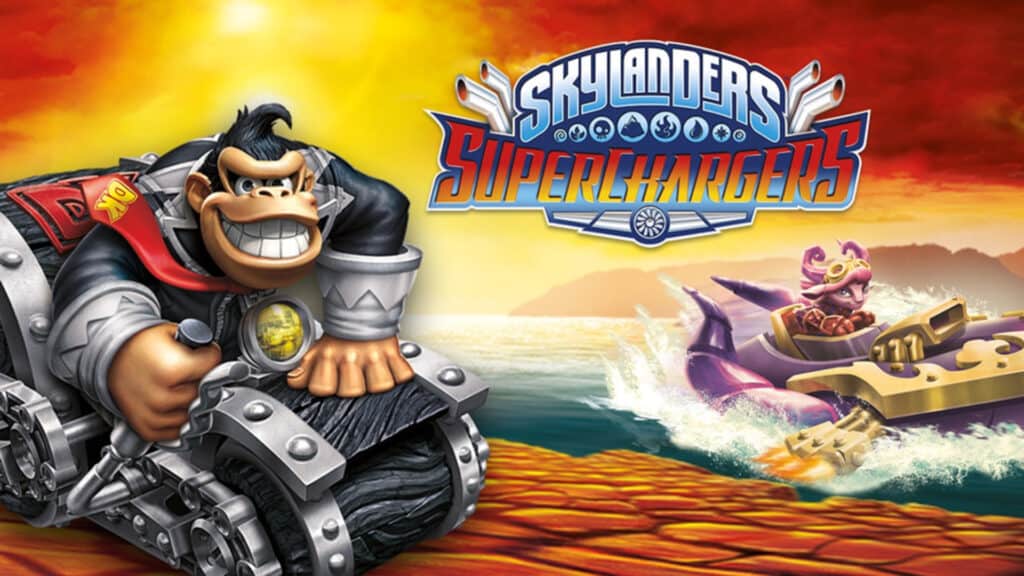
After Skylanders: Trap Team proved to be a mild upgrade for the series, Vicarious Visions were back on form for Skylanders: SuperChargers. For the first time in the series’ history, vehicle gameplay was introduced, changing how it would be played forever.
Characters new and old would have their own unique vehicles, with 20 new action figures to match. As always, the Portal of Power is the key to accessing these vehicles, which in-game have their own unique abilities. The game offers extensive customization and upgrade options for vehicles, which of course improves your performance on the race course. It also includes several different racing modes, where you can use your characters to race against AI or other players in online races.
Another upgrade to arrive through the addition of vehicles is elemental zones. After being relatively untouched in Skylanders: Trap Team, SuperChargers allows your vehicles to contribute to whether you can access them or not. This means that over the course of a full playthrough, you’re more likely to see everything the game has to offer! These zones have even been redesigned to be a hybrid of platforming and vehicle gameplay, making them more unique than ever.
The game doesn’t fully forget its platforming roots. While many of the areas in the game are exclusive to vehicles, the standard action-adventure gameplay still exists as it has in the previous releases. Ultimately, there’s not a lot of innovation there, with the focus of this game being the vehicle gameplay.
Skylanders: Imaginators (2016)
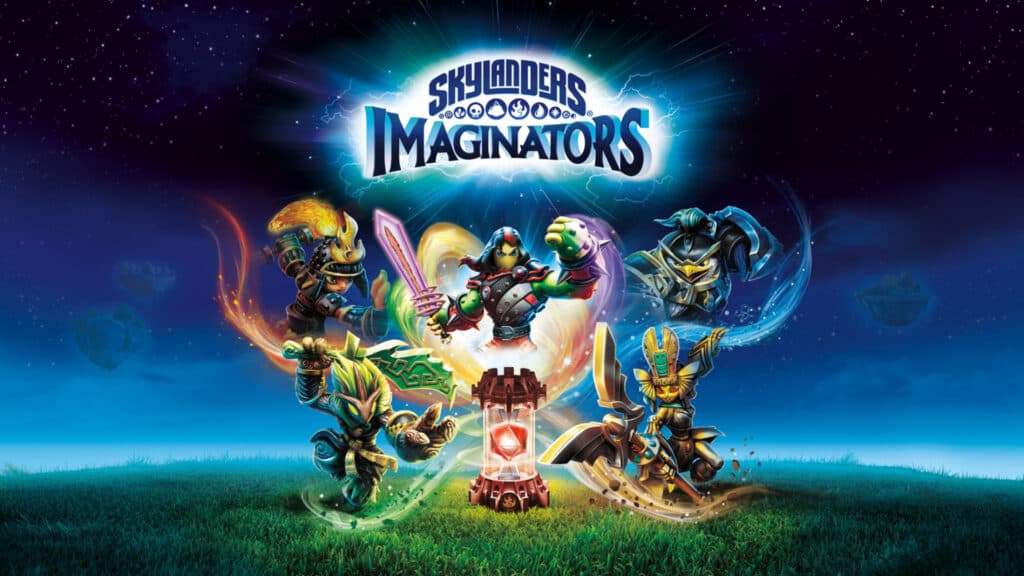
The Skylanders series has never seen such a focus on customization as is present in Skylanders: Imaginators. The game introduces Imaginators, new characters that you can fully customize to your heart’s desire. You get to choose from various body parts, weapons, voices, and more to create a totally unique character. While Skylanders: Swap Force experimented with this idea, this release took it to the next level.
To save your creations, you would have to buy Creation Crystals. By placing these onto the Portal of Power, you could save your character and even move them to other platforms. While these crystals may not have the same visual appeal as an action figure, it would be impossible to reproduce the amount of customization possible in-game, so this is the next best thing.
On top of Imaginators, the game also introduces Senseis. These characters are designed to improve the combat of Skylanders: Swap Force, and are assigned a specific Battle Class to decide their combat style. This arrives alongside a bunch of new combos and special attacks, which add layers of complexity to the series’ often-basic combat mechanics.
The final huge addition to the game was Elemental Realms. These are essentially an expansion of elemental zones, special challenges that are to be used with specific Battle Classes. Like elemental zones prior, these are designed to have you consider your build choices throughout the game.
After the release of Skylanders: Imaginators, the series’ mainline titles ground to a halt. After five years of yearly releases, there has been nothing since 2016. Activision has yet to confirm any plans for a return, with series developers Vicarious Visions and Toys For Bob moving on to other projects for the publisher.
Skylanders: Battlecast (2016)
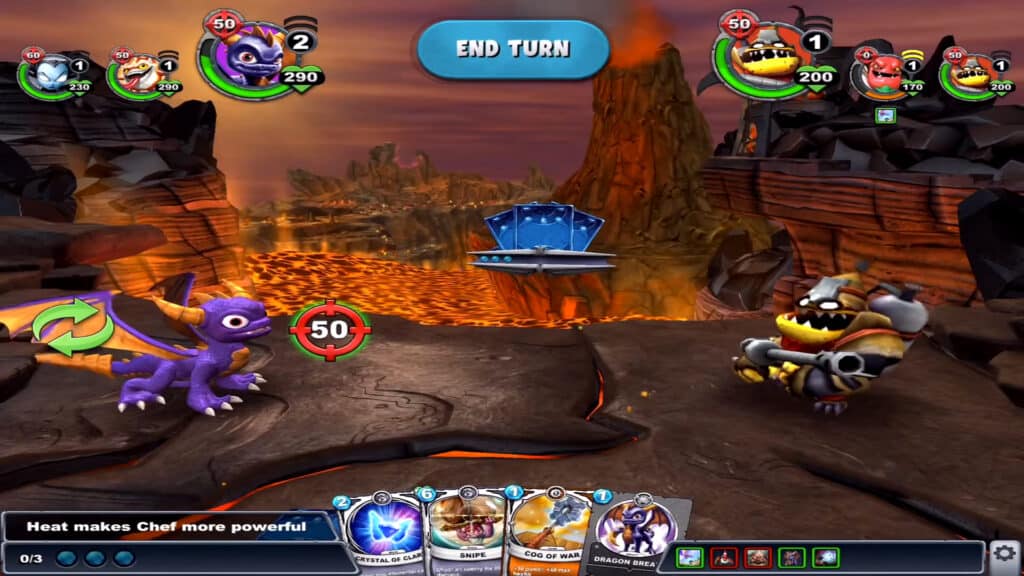
©Screenshot from Skylanders: Battlecast.
After 2012 saw a huge amount of spinoffs for the Skylanders series, the focus moved to main releases for a few years. This break led to a huge amount of characters being introduced in the new games, as well as plenty of new mechanics. With a sufficient amount of time passed, Skylanders: Battlecast was released in 2016, a digital trading card game that involves the collecting and battling of various cards. In true Skylanders fashion, you could collect the cards either digitally or physically, scanning them using your mobile device’s camera to bring them in-game.
Each of these cards is based on Skylanders characters, spells, gear, and relics. You then pick a deck of up to 30 cards, balancing it for battle however you’d like. The characters in these decks have their own special abilities and stats that affect their performance. You can level these Skylanders up over time, so you don’t necessarily have to discard them if they don’t look too powerful.
The battles in the game can be both single or multiplayer. Single-player has an entire campaign to play through, increasing in difficulty with each battle. Multiplayer is ranked, so it can get competitive. Either way, the core of the combat is the same. Each player has a turn, where you can play cards that either attack, defend, or use special abilities. You must consider exactly when and where they go, with strategy being key. Some cards even have range limitations, or affect certain positions on the board. Mindlessly playing cards will result in defeat in Skylanders: Battlecast. The win condition involves reducing your opponent’s health to zero.
The game wasn’t long for this world, shutting down in late 2017, barely a year post-release.
Skylanders: Ring of Heroes (2018)
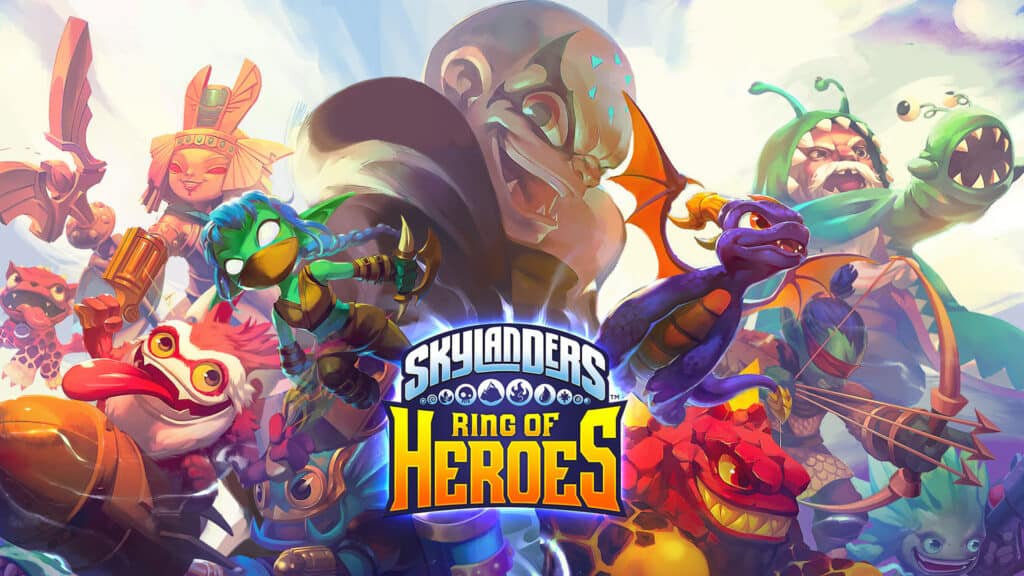
Potentially the final outing of Skylanders, Ring of Heroes is the last we’ve seen of the series. This release was a mobile RPG with a focus on turn-based combat and team building.
The game allows you to put together your team of Skylanders, each having their own strengths and weaknesses to consider. They even have set roles to make it easier to find their place in your squad. You get these characters in a variety of ways, through gameplay, summoning, or via in-app purchases. Over time, you level and upgrade your Skylanders by using resources, which can help them unlock new abilities. The game rewards investing the time into a single character, as opposed to looking for new ones to use.
The turn-based battles are relatively simple. You select actions for your team during a turn, and your characters obey. Elemental classes from the main games play a key role here, with some stronger against others. Considering elemental matchups is absolutely essential to victory, and can be the sole difference between winning and losing. Like Skylanders: Battlecast, Ring of Heroes is both single-player and multiplayer, allowing for hugely competitive PVP battles. The campaign is pretty standard stuff for the series, with a general formula being followed for this across the board. There’s no doubt that Skylanders: Ring of Heroes is at its strongest when you’re competing against real players.
During its lifespan, the game was updated with a series of themed special events. These offered unique rewards for those who participated and brought new content to the game. It had a good run, eventually ceasing development in late 2022. Whether it ends up being the final Skylanders game remains to be seen. For now, that seems to be the case.
The image featured at the top of this post is ©Activision.
